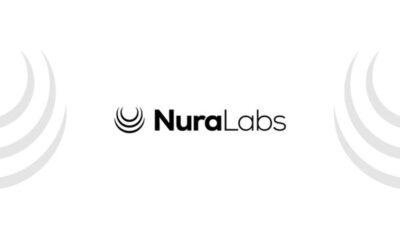Artificial Intelligence
How to Find The Partners You Need To Start A Profitable AI Business
Artificial Intelligence (AI) has evolved from being a futuristic concept to a transformative technology impacting various industries. With AI permeating sectors such as healthcare, finance, retail, manufacturing, and beyond, the opportunities for starting an AI business are boundless. This guide provides a comprehensive, step-by-step approach to starting an AI business, offering insights into profitable AI business ideas, how to build your AI solution, and strategies for monetizing, growing, and scaling your business.
Part 1: Understanding AI and Its Business Potential
1.1 What is AI?
Artificial Intelligence refers to the simulation of human intelligence in machines that are programmed to think like humans and mimic their actions. The term also applies to any machine that exhibits traits associated with a human mind, such as learning and problem-solving.
1.2 The Business Potential of AI
AI is reshaping industries by automating processes, providing deep insights through data analysis, and enabling new products and services. The global AI market size was valued at $93.5 billion in 2021 and is expected to expand at a compound annual growth rate (CAGR) of 38.1% from 2022 to 2030. This rapid growth underscores the significant opportunities in AI-driven businesses.
Part 2: Identifying Profitable AI Business Ideas
2.1 AI-Powered Chatbots and Virtual Assistants
Chatbots and virtual assistants are widely used across various industries for customer service, sales, and support. These AI solutions can handle a wide range of customer queries, reduce response times, and improve overall customer satisfaction.
2.2 AI in Healthcare
AI applications in healthcare include predictive analytics for disease prevention, personalized treatment plans, medical imaging analysis, and drug discovery. These applications not only improve patient outcomes but also reduce healthcare costs.
2.3 AI for Predictive Maintenance
Predictive maintenance uses AI to predict equipment failures before they happen, saving companies time and money. This is particularly valuable in industries like manufacturing, energy, and transportation.
2.4 AI in Finance and Fintech
AI can be used for fraud detection, risk management, automated trading, and customer service in the finance sector. AI-driven financial advisory services, also known as robo-advisors, are another growing market.
2.5 AI in Retail
Retailers use AI for personalized shopping experiences, demand forecasting, inventory management, and automated customer service. AI can also help optimize supply chains and logistics.
2.6 AI in Marketing and Sales
AI-driven marketing tools can analyze customer data to create personalized marketing campaigns, optimize ad spend, and predict consumer behavior. AI is also used for lead generation and sales forecasting.
2.7 AI in Education
AI can personalize learning experiences, automate administrative tasks, and provide intelligent tutoring systems. EdTech companies are increasingly integrating AI to enhance the educational experience.
Part 3: Step-by-Step Guide to Starting an AI Business
3.1 Research and Identify Your Niche
The first step in starting an AI business is identifying a niche where AI can provide significant value. Consider the following:
- Industry Needs: Identify industries with pain points that can be addressed by AI solutions. For example, healthcare has a growing need for AI in diagnostics and patient management.
- Technology Gaps: Look for areas where current technology solutions fall short and AI can bridge the gap.
- Market Research: Conduct thorough market research to understand the demand, competition, and potential customers for your AI solution.
3.2 Develop Your Business Plan
A solid business plan is crucial for any startup. Your AI business plan should include:
- Executive Summary: A brief overview of your business, including your value proposition, target market, and financial goals.
- Market Analysis: A detailed analysis of your target market, including customer segments, market size, and growth potential.
- AI Product or Service: A description of the AI product or service you plan to offer, including its features, benefits, and how it addresses the needs of your target market.
- Revenue Model: How you plan to make money. Will you charge for software licenses, offer a subscription model, or monetize through advertising?
- Marketing and Sales Strategy: How you plan to attract and retain customers.
- Operational Plan: Details on how your business will operate, including the technology stack, development process, and key milestones.
- Financial Plan: Projections for revenue, expenses, and profitability.
3.3 Building Your AI Solution
Building an AI solution requires a mix of technical expertise and a deep understanding of your target market. Here’s how to approach it:
- Technology Stack: Choose the right technology stack for your AI solution. This includes selecting programming languages (Python, R), AI frameworks (TensorFlow, PyTorch), and cloud platforms (AWS, Google Cloud) that best suit your needs.
- Data Collection and Preparation: AI solutions rely on data. You’ll need to gather relevant data, clean it, and prepare it for training your AI models. Data quality is crucial for the accuracy of your AI solution.
- Model Development: Develop the AI models that will power your solution. This involves selecting the right algorithms, training the models, and fine-tuning them for optimal performance.
- Integration and Testing: Integrate your AI models into your product or service and conduct thorough testing to ensure it performs as expected. Consider edge cases and potential failures in your testing process.
- User Experience (UX): Ensure that your AI solution offers a seamless and intuitive user experience. Even the most advanced AI solution will fail if users find it difficult to use.
3.4 Legal and Ethical Considerations
AI businesses must navigate a range of legal and ethical considerations:
- Data Privacy: Ensure that your AI solution complies with data privacy regulations, such as GDPR in Europe or CCPA in California. Implement robust data protection measures to safeguard user data.
- Bias and Fairness: AI models can inadvertently reflect biases present in the training data. Implement measures to detect and mitigate bias in your AI models.
- Intellectual Property: Protect your AI solution through patents, trademarks, and copyrights where applicable. Also, be mindful of any third-party IP rights when developing your solution.
3.5 Monetizing Your AI Business
Monetization strategies for AI businesses vary depending on the nature of the product or service. Here are some common approaches:
- Subscription Model: Charge users a recurring fee to access your AI solution. This is common for SaaS (Software as a Service) platforms.
- Licensing: License your AI technology to other businesses. This is a good option if you’ve developed a specialized AI model that can be integrated into other products.
- Freemium Model: Offer a basic version of your AI solution for free, with the option to upgrade to a premium version with more features.
- Per-Use Pricing: Charge customers based on their usage of your AI service. This model works well for APIs or platforms that handle large volumes of data.
- Advertising: If your AI solution is consumer-facing, consider generating revenue through advertising.
3.6 Launching Your AI Business
Launching your AI business requires careful planning and execution:
- Beta Testing: Before a full launch, conduct a beta test with a small group of users to gather feedback and make improvements.
- Marketing Campaign: Develop a marketing campaign to create buzz around your launch. Use digital marketing strategies such as social media, content marketing, and email campaigns to reach your target audience.
- Partnerships: Consider partnerships with other companies or influencers in your industry to expand your reach.
- Public Relations: Use press releases, media interviews, and speaking engagements to establish credibility and attract attention to your AI business.
Part 4: Growing and Scaling Your AI Business
4.1 Customer Acquisition and Retention
Growing your AI business requires a focus on acquiring and retaining customers:
- Customer Acquisition: Use a mix of inbound and outbound marketing strategies to attract new customers. This includes content marketing, SEO, PPC advertising, and sales outreach.
- Customer Retention: Keep your existing customers engaged and satisfied through excellent customer service, regular updates, and loyalty programs.
4.2 Scaling Your Technology
As your business grows, your technology needs to scale accordingly:
- Cloud Infrastructure: Use cloud services like AWS, Google Cloud, or Microsoft Azure to scale your infrastructure. Cloud platforms offer flexible resources that can grow with your business.
- Automation: Automate as many processes as possible, from data collection to model training, to free up time and resources for growth.
- Continuous Integration/Continuous Deployment (CI/CD): Implement CI/CD pipelines to streamline the deployment of new features and updates.
4.3 Expanding Your Product Offerings
Diversify your revenue streams by expanding your product or service offerings:
- New Features: Continuously improve your AI solution by adding new features that meet the evolving needs of your customers.
- Vertical Expansion: Consider entering new markets or industries where your AI solution can add value.
- Horizontal Expansion: Develop complementary products or services that appeal to your existing customer base.
4.4 Scaling Your Team
As your business grows, so will your need for talent:
- Hiring: Hire additional team members with expertise in AI, data science, software development, and business development.
- Training: Invest in training programs to keep your team up-to-date with the latest AI technologies and best practices.
- Culture: Foster a company culture that encourages innovation, collaboration, and continuous learning.
4.5 Securing Funding
Scaling often requires additional capital. Consider the following funding options:
- Bootstrapping: Use your own savings or reinvest profits to fund your growth. This allows you to retain full control of your business.
- Angel Investors: Seek out angel investors who are willing to invest in early-stage startups. In exchange, they will typically take an equity stake in your business.
- Venture Capital: If you need significant funding to scale, consider venture capital (VC) firms. VCs provide large sums of capital in exchange for equity and often bring valuable industry connections.
- Grants and Competitions: Apply for grants or enter startup competitions that offer funding to AI and tech startups.
4.6 Strategic Partnerships and Acquisitions
Partnerships and acquisitions can accelerate your growth:
- Strategic Partnerships: Partner with companies that offer complementary products or services. For example, an AI company focused on healthcare could partner with electronic health record (EHR) providers.
- Acquisitions: Consider acquiring smaller companies with technology or talent that can enhance your product offering or speed up your development process.
Part 5: Navigating Challenges in the AI Business
5.1 Data Privacy and Security
As an AI business, handling data responsibly is crucial. Implement strong data privacy and security measures to protect your customers’ information and comply with regulations.
5.2 Ethical AI
Ensure that your AI solution adheres to ethical guidelines. This includes avoiding bias in AI models, being transparent about how your AI makes decisions, and considering the societal impact of your technology.
5.3 Competition
The AI space is competitive, with both startups and tech giants vying for market share. Stay ahead of the competition by continuously innovating, understanding your customers, and differentiating your product.
5.4 Talent Acquisition
Finding and retaining top AI talent can be challenging. To attract the best candidates, offer competitive salaries, a positive work environment, and opportunities for professional growth.
Conclusion
Starting an AI business offers incredible opportunities, but it also requires careful planning, technical expertise, and strategic execution. By following the steps outlined in this guide, you can identify a profitable niche, develop a high-quality AI solution, and successfully launch and scale your business. Whether you’re building AI-powered chatbots, developing healthcare solutions, or innovating in another sector, the potential for success in the AI industry is vast.
The AI landscape will continue to evolve, with new technologies and applications emerging regularly. Stay informed about the latest trends, be willing to adapt, and remain committed to providing value to your customers. With dedication and a clear strategy, your AI business can thrive in this dynamic and rapidly growing field.
-

 Foreign Policy7 days ago
Foreign Policy7 days agoInside Schedule F: Will Trump’s Federal Workforce Shake-Up Undermine Democracy?
-

 Press Release6 days ago
Press Release6 days agoIn2space Launches Campaign to Make Space Travel Accessible for All
-

 Press Release2 days ago
Press Release2 days agoNura Labs Files Revolutionary Patent: AI-Powered Wallet Solves the $180 Billion Crypto Staking Complexity Crisis
-

 Press Release3 hours ago
Press Release3 hours agoGlobal Compound Feeds and Additives Industry Report: Market Expansion and Competitive Insights to 2035
-

 Technology2 hours ago
Technology2 hours agoWhat to Know Before Switching Cell Phone Network Services in 2025































